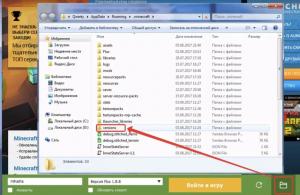Good day. I already wrote that not so long ago I became the owner of my childhood dream - the legendary rally car Lancia Delta Inegralr HF. I also wrote about the fact that not everything suits me on the part of its electronic "stuffing". Like it or not, almost thirty years have passed since my Delta rolled off the assembly line.
In my last post (), I talked about the Start-Stop ignition button that I ordered on Aliexpress. As I said earlier, I will install it over the weekend, but now it's time for a new review.
What is a HUD display?
Today we will talk about the HUD display. HUD-display (Head Up Display) - literally can be translated as: - "display of a raised head." In the people we call this device - a projector on glass. It projects various indicators (speed, engine speed, on-board network voltage, fuel consumption, etc.) of the car onto Windshield.
Where did he come from?
Initially, the HUD display was not designed for cars at all, but for US Air Force fighter aircraft. This was done with one goal - to minimize the time (and this is a fraction of a second) that the pilot takes while he is looking at the instruments.
How I caught fire with a HUD display
It all started two years ago when my sister's husband bought a Buick Randevouz. Buick Rendezvous is a huge seven-seat jeep, not a SUV =). So, he bought it in another city and asked me to drive the car with him. We got there in his Mazda CX-9, and back I had the pleasure of driving a Buick Rendezvous. Since the re-registration took us almost a whole day, we drove back at night. As soon as dusk appeared, I turned on parking lights and voila, on the windshield, my speedometer began to duplicate. Six hundred kilometers driving a real American SUV gone in an instant. But, most of all, I could not forget that pale green speedometer that was projected on my windshield.
Buying a device called a HUD
My friend went the easy way: he downloaded the SpeedFox app for his mobile phone on Anroid and then put the phone under the windshield. This option did not suit me, and since I am not looking for easy ways, Two years ago, I began searching for this miracle on the Internet. I started searching... I searched everywhere: in online stores, at auctions, on sites with private ads. And I found it here on Aliexpress http://ru.aliexpress.com/item/2015-W02-HUD-5/32353508228.html?s=p. What I immediately liked was the rich filling (as stated in the description), compatibility with OBD interface II and free shipping. The price really did not suit me a little, after all, almost fifty bucks is a little expensive ... But still I ordered it.
The seller sent the goods quickly and sent me a track number RC858046802CN to track my HUD.
The goods went a little more than a month. To be honest, I was afraid that it would not come at all ... Because at that moment, just two parcels did not reach me. But everything worked out.
HUD display
The HUD came to me well packaged. The seller from China did not regret the pimply film. Let me remind you that purchases on Aliexpress are insured and if the goods arrive damaged, the buyer has the right to open a dispute (Open dispute) and not pay for the goods. Therefore, recently the Chinese have been very attentive to packaging. And since my HUD display is not a very cheap thing, by the standards of Aliexpress, then due attention was paid to the packaging.  Opening a gray package with the inscription ChinaPost and unfolding a kilometer of pimply film, I found just such a box.
Opening a gray package with the inscription ChinaPost and unfolding a kilometer of pimply film, I found just such a box. 
Having opened top cover cardboard packaging, this picture appeared in front of me. 
Five items were neatly folded in the box: an instruction manual, a sticky mat, a mini-USB/OBD2 cable, a mirror film on the glass, and the HUD display itself. 
The HUD display was wrapped in another kilometer of pimply film =) 
This is what the instruction looks like 
And this is a carpet 
Oh sticky on both sides 
What does the OBDII cable look like? 

The cable is very long, about a meter in length 
Reflective film on glass 
Well, actually the HUD display itself 

Socket for connecting the OBD2 cable 
Mode switch 
In general, I liked the product of Chinese electronics. Assembled Hud very high quality. The plastic is flush everywhere. Nothing creaks anywhere.
The OBD2 cord is very well made. It is made of durable material and in terms of rigidity it resembles wires with a good cross section. 
The rug is just mega-sticky, the finger is torn off with difficulty =)  Connection time
Connection time
On My Lancia, the OBD2 interface is supported through a special adapter. But, alas... the HUD display didn't work. Even after a couple of hours of dancing with a tambourine around this device, they did not bring any results. It's a shame and annoying... But I don't give up =)
The first thought was that perhaps the device itself did not work. Then I decided to try it on my wife's car. She has a Ford Ka.
After connecting to her car, I exclaimed to myself: Eureka!!! Earned!!!
The device actually turned on. There are some settings. Using the instructions, I entered the parameters of the car and started it.
The device works, but does not show anything. After about thirty minutes of dead time, HUD began to show the voltage of the car network.
P.S. I'm still learning about this device. Tried to connect it to: Suzuki Grand Vitara 2008, Buick Rendevouz 2003, Ford Ka 2007, Mazda CX-9 2007 - but the result is two and not very positive, either does not work at all, or shows mains voltage.
We'll investigate further...
HUD projector on the windshield is designed to prevent an accident, projects important information on the windshield at eye level, such as: speed, fuel consumption, voltage, date, time, engine speed, battery discharge signal, mileage, travel time, fuel consumption per 100 km and other options.
Display position and brightness can be adjusted
Prevents the driver from looking at the dashboard and helps avoid breaking rules and regulations due to speeding.
Reduces the risk of traffic accidents caused by distraction of the mind due to looking down.
Connects via car OBD2 connector
HUD display
Easy installation, connect to OBDII diagnostic socket
Indication:
- Engine RPM
- Fault alarm icons
- Speedometer
- Engine temperature
- Voltage
- Mileage
- Fuel consumption
- Remaining fuel
Equipment:
1. Device
2. Mirror film
3. Mat for attaching the device to the dashboard
4. OBDII - cable
INSTALLATION INSTRUCTIONS
Preparatory work
1. Find out your type and brand vehicle. When choosing the type of vehicle that must comply with the OBD2 standard, you need to open the hood and find the sticker under it. If the sticker says "OBD2 Certified Tool", it means you can install the HUD (Fig. 1).
2. Connect HUD to vehicle. You can find the 16-channel diagnostic connector socket under the steering wheel of the car above the gas pedal. Then connect it to the OBD2 wire connector (Fig. 2).
3. Put non slip mat in a horizontal position at the front of the vehicle and adjust the angle of the HUD on it.
4. Paste the reflective film on the windshield of the car above the HUD in order to obtain a high-quality image of the data. You can ask an official dealer to apply the reflective film.
Some tips for gluing the film:
A. You can evenly spray water on the windshield with a spray.
B. Please tear off the protective layer of the film and spray some water on both sides of it. Then install it in the place you want.
C. Squeeze out the water from under the film along smooth surface object until it is completely removed and the bubbles inside disappear.
E. When the water is squeezed out, you can wipe off the water and dust around the screen.
5. To check the power, you need to plug the HUD into the connector and you will see the previous voltage reading. Then enter the research state of the computer version of the vehicle. After that, we can say that the HUD was installed successfully.
HUD settings options
HUD display values are the same as on-board computer car. However, they may differ from the on-board computer. You need to enter the HUD into setup mode and make a small adjustment. As a result, the display on the HUD display will match the data of the vehicle indicators. The specific steps are as follows.
Connect the HUD to the car and start the engine. To enter the adjustment mode, you need to vertically press the control wheel and hold it for 5 seconds. The next single click of the wheel adds one. You can set the plus or minus of these parameters by turning the wheel to the left or right. At the same time, you should pay attention to how the device is located in relation to you and where in this moment"left" and where is "right". Without this, mistakes can be made. In addition, you should be aware that in the setup mode, the HUD display does not show the numbers in a mirror image, but in a direct one. This makes working with him in this mode much more convenient.
You can return the display screen to the operating mode by pressing the wheel vertically and holding it for 5 seconds or restarting the HUD. (Fig. 3).

Entering adjustment mode

Explanation of the 14th paragraph - fuel consumption.
Setting the data for the conditional (reference) average fuel consumption is determined by the manufacturer for a new car. So, if the factory fuel consumption is 8.7 l / 100km, then the HUD should be set to 87.
Explanation of the 15th paragraph. ECU is a vehicle onboard computer protocol. This function is to coordinate (compatibility) the vehicle protocol with the HUD program to prevent errors or deviations. As a rule, the value of this item is set by the computer itself.
Setting preferences:
1. Fast refueling: start the car and turn the dial of numbers to set the amount of fuel for refueling; unit of measurement in liters.
2. Explanations of the 11th paragraph. Generally speaking, a car manufactured after 2010 comes with an air mass meter. The user can select =0 to see if fuel consumption is displayed. If fuel consumption is not detected, then set the factory emission parameter.
After setting, press vertically on the setting wheel for 5 seconds to return the display from setting mode to working mode, or restart the HUD.
Restore factory default settings.
When the HUD is connected to the vehicle, do not start the engine, wait for the HUD to turn off. With the engine off and the HUD off, turn the wheel to the right and hold it down for 5 seconds. Then you will hear a "tic" sound from the HUD, which means that the factory settings have been restored.
Clearing fault codes.
When the HUD is connected to the car, do not start the car, put the key to the "ON" position, and wait for the HUD to turn off, turn the wheel to the left and hold it for 5 seconds. You will hear a beep from the HUD, which means that the erasing of trouble codes is completed.

General operating settings.
1.Switching the functional areas of the display.
When the car is started and the display interface is working, you can turn the wheel to the left for 5 seconds and see "functional area 1" flashes. You can then turn the wheel left or right to choose what you want to display. By pressing the wheel vertically, you can enter the "functional area 2" section. By repeating the same steps, in the same way you can enter the function area 3". Finally, you can exit these settings by pressing the wheel vertically for 5 seconds.

2. Switch sound signal
When the car is started and the interface is displayed normally, you can turn the wheel to the left (when the HUD is set to the right) for 5 seconds, and you will see that the voice signal icon is not lit. Repeat these steps until the icon lights up. Continue these steps until you get the desired state.
3. Set the value of the emergency refueling signal.
When the car is running and the display interface is running, you can turn the wheel left or right to decrease or increase the number that appears in the speed window. Instead of reading the speed at this time, this window will display the figure for the amount of fuel in liters. For example, turn the wheel until 20 is set. By doing this, you increase the fuel supply to 20l to trigger an alarm. (Note: This function is only effective when the fuel selector in step 13 is set to 0.)
Functional instruction values
1. Parameter value: shows the value in units of kilometers, miles and engine revolutions.
2. OBD2 port: connect HUD to car.
3. Fuel icon: flashes when there is not enough fuel to drive 100km.
4. Engine Fault: Flashes when the car's engine has a problem.
5. Engine RPM: Shows the amount of engine RPM.
6. Engine RPM icon: will flash when the engine RPM reaches the set limit.
7. Speed signal: flashes when the speed exceeds the set value.
8. Tip to rest: Lights up when riding continuously for more than 4 hours, starting from turning on the HUD.
9. Audio switch: Lights up when the audio alarm is connected.
10. Fuel Consumption Icon: Shows fuel consumption.
11.Fuel volume value: shows the fuel consumption of the last trip.
12. Number wheel: multi-function switch. It can be rotated left or right, pressed vertically. With it, you can enter the settings mode by long pressing vertically.
13. Fuel consumption per hour: shows instant consumption liters of fuel per hour while stationary.
14. Light sensor: senses the intensity external source light and adjusts the brightness of the HUD. Adapts to the environment automatically.
15. Fuel consumption per 100km: shows the instantaneous fuel consumption in liters per 100km while driving.
16. Position throttle valve, temperature, UOZ and acceleration per 100 km: voltage - shows the voltage of the car; throttle valve - shows its position; temperature - shows the temperature of the coolant; UOZ - shows the ignition timing, which is an indicator of the efficiency of the engine; car acceleration up to 100 km/h — shows the time of car acceleration up to 100 km/h.
17. Seconds: display the unit of acceleration up to 100 km/h.
18. Value of parameters: shows the values of voltage, throttle position, water temperature, UOZ and acceleration to 100 km / h.
19. Mileage: the icon is on when there is only 100 km of fuel left.
20. RPM: Displays the number of engine revolutions when the parameter value is multiplied by 10.
21. Kilometers per hour: Displays the speed unit.
22. MPH: Displays the speed unit.
Common problems
Problems; possible reasons; solutions
Overspeed alarm not triggered. the speed limit setpoint is too high (refer to points 4 and 5 of adjustment) or the alarm function is closed (see page 4, point 2).
Engine overspeed alarm not working. the setpoint is too high or the alarm function is disabled. Reset the limit value (see point 3 for adjustments) or turn on the alarm switch (page 4, point 2).
No image on HUD display after engine start. ignition key did not open switch open or poor connection of HUD connectors.
Inaccurate display of fuel consumption. there is no air flow sensor in the car (they have been mainly installed since 2010). Instead of indicator =0, set emission indicators (see paragraph 11 of adjustments) in accordance with technical specifications your vehicle. If they are not there, then you can set the indicator recommended by this instruction = 16.
Engine speed and RPM not showing on display. the vehicle's on-board computer or EU port is not OBD2 compliant. Contact the car manufacturer.
Doesn't show mileage on display. incorrect settings fuel level and fuel consumption not calibrated. Set the fuel level data source (see paragraph 9 of adjustments) to the manual input position = 0 and adjust the fuel consumption idle move(see paragraph 2 of the adjustments).
Speed displayed inaccurately. choose the correct units of speed - miles / hour or km / h, they have different numerical values (see page 4, point 1). Calibrate the speed data (see paragraph 0 adjustments).
Only speed and fuel consumption are displayed on the display. the speed indicator exceeds the set limit (see paragraph 5 adjustments) or included in the set of display settings (see paragraph 6 adjustments) switch to mode =1.
In 2017, a device called the "car windshield projector" (heads up display or HUD, literally - head up display) continues to gain popularity.
The purpose of this device is to improve driving comfort and safety. The device projects up-to-date information from the on-board computer onto the windshield of a car or a special screen, which is located in the driver’s line of sight and allows him not to be distracted by the dashboard - all necessary information right before his eyes.
While driving a moving vehicle, every millisecond of driver distraction is worth its weight in gold and increases the chance of an accident.
When the driver looks at the dashboard, the driver needs not only to physically turn his eyes, but also to “refocus” on a closely located object, to adapt to a significantly different brightness.
HUDs are attractive because of the ability to display the image in front of the car and thus drastically reduce driver distraction time. And every millisecond saved is the lives of drivers and passengers.
We have compiled for you a selection of the 10 most interesting devices powered by this technology.
1. Navdy Car HUD: A smart car gadget that allows you to control your smartphone without taking your eyes off the road. Important information projected onto a transparent HUD screen located in the driver's field of vision. The projector connects to Android and iOS smartphones via Bluetooth and displays information at the level of the windshield. Navdy supports gesture control and voice commands, which means you no longer have to lower your head while driving to find the right buttons. You can buy the device(~30 000 rubles)
2 Carloudy:wireless HUD projector for your car, displaying the necessary information while driving. Connects to a smartphone via Bluetooth, has a special transparent screen and voice control. The manufacturer of this device assures that the information is perfectly readable even in bright sunlight. All you have to do is place the device on the dashboard and it will display information right in front of you, at windshield level, showing the path and turns from the Google Maps navigator. Obviously, this option of using a smartphone is much safer and more convenient. Charge this device needed once every two weeks. You can order a projector: [] (~15 600 rubles)

3.Hudway Glass:is a simplified version of the devices mentioned above, and actually consists only of a stand for your smartphone and a special glass that acts as a screen that reflects the necessary information. You can use any free HUD app, but Hudway recommends their own. You can buy this device [] (~3000 rubles)

4. Continental AR HUD.Known in automotive world Continental in its own way imagines such a device as a projector on the windshield. And call it HUD display augmented reality. Such a device will be able to warn you of various driving situations, for example, if you inadvertently start to pull out of your lane.
The projector displays virtual markers in front of the vehicle to indicate the lane on the road or the street to turn into, making navigation even more convenient. Company Continental has already successfully implemented its developments in premium BMW cars, Mercedes-Benz and AUDI. Read more [ ].

5. Vinet HUD.Another interesting device, which performs the same functions, but is not actually a windshield projector, as it uses a transparent OLED display instead of reflective glass. Although on the one hand this limits its capabilities, on the other hand, manufacturers claim that in this way they have completely solved the problem of visibility of information in bright sunlight, which is present in other projectors. In the kit, a smartphone application was also developed that collects detailed driving statistics. Device price: $199. (~12 000 rubles)

6.Explore.One of the most remarkable devices in this list. The developers promise that with this device your car will become truly smart. Indeed, the list of features of this projector is impressive: navigation, music, calls, mail, instant messengers, built-in camera and much more, all controlled by voice and gestures to ensure safe driving. The device is still under development at the time of this writing. [ ]. This HUD projector will retail for $499. (~30 000 rubles)
Hello friends! Due to the fact that my swallow ( Chevrolet Aveo) is not equipped with a full-fledged on-board computer, and I have neither the desire nor the opportunity to change the car to a more expensive one, I decided to buy a HUD, aka on-board computer projector on the windshield.
HUD projector or head-up display
- This is a projector that projects instrument readings directly onto the glass just below the driver's eye level.
Having played enough bluetooth adapter ( ELM327 Bluetooth OBD II, which transmits on-board computer data to the phone via bluetooth), I realized that this is not very convenient.
Therefore, I decided to purchase a device that is devoid of all these shortcomings.
SELECTION AND ORDER
HUD projector Sold in two versions, in one-color version, and multi-color. I ordered multicolor. The one-color version costs less, about $36.The parcel went about 20 days. Came in a regular pimply package.

Screenshot of payment

SPECIFICATION IN ENGLISH

SPECIFICATION IN RUSSIAN LANGUAGE (My translation)
Model: A8
Language: English
Color: Black
Material: Plastic
Display: 5.5 inches.
Items on the display: speed, instantaneous fuel consumption (per hundred kilometers per hour), voltage of the on-board network. Alarm for overspeed, coolant temperature, battery voltage, engine speed, ECU errors.
Output data: time, vehicle speed, engine speed, fuel consumption, throttle position, engine coolant temperature, reads and resets engine ECU errors.
EQUIPMENT
- Projection display;- Reflective film (Special semi- transparencies to improve the readability of the projector);
- OBD II cable;
- Anti-slip mat;
- User manual in English.

The dimensions and weight of the projector correspond to those indicated on the website. Made of matte black plastic with rounded edges. Backlash and squeaks, with a slight deformation by hands, are absent.
OPERATING PRINCIPLE, INSTALLATION
We put the projector on the dashboard of the car (using an anti-slip mat).During operation, the projector emits light, which is mirrored by the windshield, on which we actually see information in the form we are used to.

We connect the cable to the OBDII diagnostic connector (you need to rummage in the space under the steering wheel, sometimes under the ashtray or in the armrest). The cable, if desired, can be tucked under the trim or interior seal.
Connect the other end of the cable to the HUD projector (MiniUsb).
In the place where the indicators are projected onto the glass, it is necessary to stick the mirror film that comes with the kit (having previously cleaned the glass from the inside).
All elements (designations, readings) are mirrored. This was created so that when reflected on the windshield, the information is projected back into a readable form.
POWER THE DEVICE
The device does not require additional power, it works from one cable that comes with the kit.The projector can only work with the diagnostic socket (on many modern cars this connector is present), the device is turned on and off automatically, but if desired, the projector can be turned on or off manually.

On the one hand, the cable has an OBDII connector (16 pins), on the other, Mini Usb.
The cable is 115 cm long.
GOVERNING BODIES
The projection display has a diagonal of 5.5 inches.On the left side, next to the power connector, there is a power button, as well as a 3-way joystick for navigating the menu, configuring and calibrating the device.
On the back side there is a small hole for a buzzer (tweeter).

When installing, do not forget to remove protective film, it can partially reflect light, which will have a bad effect on the overall perception.
The screen itself has a matte finish.
HUD PROJECTOR IN THE CAR.
After starting the engine, the device displays the battery voltage for a few seconds, after which it starts up completely.
P.S. I want to note right away that in fact the image on the windshield is seen better, clearer, the technique cannot convey all the features of the human eye.
The first thing that catches your eye is that the image on the windshield doubles. The fact is that most cars have triplex glass - laminated glass(two or more organic or silicate glasses are glued together).

For such cases, a special transparent film is provided in the kit, which is glued to the glass, above the projector itself.
After gluing the film, the image on the windshield becomes brighter, more saturated, and the “double glass” effect disappears.

I did not glue this film, since the slope of the glass is too large and the reflection does not fit into the area allocated by the film.

In fact, double reflection practically does not interfere, and after a short time it allows you to use the device quite comfortably.
After we have decided on the place, you can glue the anti-slip mat, and put the projector itself on it. After these manipulations, our projector will no longer slide on the torpedo.
PHOTO AND VIDEO
Daytime photo without reflective film




Daytime photo with reflective film


Video from the DVR in the evening
Video from the phone in the evening
DISPLAYED INFORMATION AND OTHER ITEMS

Picture 1.
The device can automatically adjust the brightness of the backlight, this is achieved thanks to light sensor, which is located in the upper right corner ( Rice. 1, Footnote 1).
At night, the brightness will be minimal, during the day it will be maximum.
Most of the evidence from dashboard cars are duplicated on the windshield. Here we can see:
Tachometer - shows the number of revolutions per unit of time ( Rice. 1, Footnote 2).
Indicator - ( Rice. 1, Footnote 5) tells us that all tachometer values must be multiplied by 1000. Thus, we will get the real tachometer values.
Alarm panel ( Rice. 1, Footnote 3).
Current vehicle speed ( Rice. 1, Footnote 4), which is measured in km/h by default ( Rice. 1, Footnote 6)
To the right is the coolant temperature display ( Rice. 1, Footnote 7), (blue stripe from 40-80C, red 100-120C.)
By pressing the middle of the projector lever (the wheel on the side), the indications of the green indication zone change (Figure 1, Footnote 10). By default, the device shows us the distance traveled by the car, which can be changed to the on-board mains voltage and coolant temperature. When you change the information display mode, the icons also change ( Fig 1. Zone 8.).
Just above this zone is the fuel consumption zone ( Rice. 1, Footnote 12). By default, fuel consumption is indicated in liters / hour, but as soon as the car starts its movement, the indicator switches to the display of liters per 100 km (instantaneous fuel consumption).
The head-up display is able to inform (by sound signals, by a burning icon) the driver about speeding, overspeed, and about temperature rise coolant. Turn the wheel lever up (hold for about 3 seconds), sound information can be turned off.
If an error occurs in the operation of the engine and not only, an indicator appears ( Rice. 1, footnote 3). The device is able to reset engine errors, this is done as follows: turn off the device using the side button, turn on the ignition, but do not start the car.
After the screen of the device turns off, you must press and hold (about 3 seconds until the beep) the wheel down.
After that, you will hear how some of the relays in your car click a couple of times.
Everything, errors are reset.
PROJECTOR MENU AND ITS CALIBRATION
To enter the device menu, you must press (press) and hold (about 3 seconds) the wheel.
After that, we will have a zero menu item. The menus are switched by a short press on the middle of the wheel, in total menu 16 items.
The fine-tuning menu allows us to customize notification settings, as well as calibrate certain values for your car.
0. (null) menu item allows us to calibrate vehicle speed value.
By default, this indicator is at the level of 107%. Wheel down or up, these values can be changed. According to my observation given parameter was too high and I set it to 100.
1. menu item calibrate tachometer readings, by default the value is set to 117. I reduced it to 100%.
2. menu item calibrates fuel consumption(Default was 100%).
3. menu item allows us set tachometer level high speed alarm(0-7 thousand revolutions).
4. menu item allows us set tachometer level(The default value was 25, that is, 2.5 thousand rpm), at which it will work overspeed warning(0-7 thousand revolutions).
5. Menu item allows you to customize speed warning.
By default, the alarm is set to 0, which indicates that the overspeed warning works on the 6th menu item.
If we set the value to 1, then upon reaching 60.80, 100 and 120 km / h, sound signals will follow.
6. menu item allows us to set a single speed indicator, upon reaching which will follow warning sound.
7. menu item, adjusts the display. There are 3 modes (mode 0, 1 and 2):
Mode 0. Shows all information
Mode 1. Shows full information only up to 80 km/h, when reaching a speed of 80 km/h or more, only brief information remains, fuel consumption and current speed.
Mode 2. Always shows brief information, fuel consumption and current speed.
8. menu item, this brightness setting (0-2). 0 - auto mode. The maximum brightness is reached at a value of 2.
9. menu item, setting fuel consumption display. 0 - do not show fuel consumption, 1 - show consumption Liters \ hour, 2 - show fuel consumption per 100 km
10. menu item, allows adjust the display of the main area of the projector(Fig. 1, Footnote 4), and display the engine speed (tachometer) there - at a value of 0.
If set to 1, the speed will be displayed in kilometers per hour.
A value of 2 will display the speed in miles per hour.
11. menu item, coolant temperature:
With a value of 1, the temperature is displayed in Celsius.
With a value of 2, the temperature will be displayed in Fahrenheit
12. Menu item allows you to customize units of distance traveled. 0 - kilometers, 1 - miles.
13. menu item allows calibrate fuel consumption. Default 80 (Available range is 10-500, most likely this is the volume of a full tank)
14. menu item is also dedicated to fuel consumption and is related to air intake or exhaust exhaust gases. The default is 16 (valid range is 0-100).
With a value of 0, the data is taken from the sensor.
To be honest, I did not understand what it is, but the instructions on this matter say:
Air displacement setting.If anyone understands, please write in the comments.
0 means the vehicle has the airflow.
1 means the reference fuel consumption.
2 means vehicle emission is 0.2L, 0.3L respectively
In the 15th menu item, we indicate voltage value at which the device understands whether the engine of the car is running or not. The principle of operation is simple, when the car is running, the generator starts to work, which increases the on-board voltage, usually up to 14.2 and slightly higher volts.
The default is 132, which corresponds to 13.2V (The allowable range is 110-150).
16. menu item, with a value of 1, reset devices.
Conclusion made during operation:
This device may seem like a stupid toy or show-off and nothing more. But there are many benefits!Advantages:
1) When driving, do not lower your eyes to the dashboard, respectively, you are less distracted (useful for beginners)!
2) The device displays data much more accurately than the arrows, I was convinced of this myself.
The arrows on the dashboard are lying, the device takes data directly from the computer.
3) High-quality assembly.
4) The device is compatible with any car that supports the OBDII standard.
5) A full-fledged on-board computer.
And now for the disadvantages:
1) Under straight lines sunbeams, is extremely difficult to parse.
Specially reflective film saves the situation, but not 100%.
2) The anti-slip mat is very sticky, I think that in the summer it will simply melt under the direct rays of the sun from the heat.
That's all, peace to all! =)
Due to the fact that my car is not equipped with a full-fledged on-board computer, and I have neither the desire nor the opportunity to change the car to a more expensive one, I decided to buy a HUD, which is also an on-board computer projector on the windshield.
A HUD projector or Head-up Display is a projector that projects instrument readings directly onto the glass just below the driver's eye level.
After playing with the bluetooth adapter (ELM327 Bluetooth OBD-II, which transmits on-board computer data to the phone via bluetooth), I realized that this is not very convenient. Therefore, I decided to purchase a device that is devoid of all these shortcomings.
SELECTION AND ORDER
The HUD projector is sold in two versions, one-color and multi-color. I ordered multicolor. The single color version is cheaper. The parcel went about 20 days. Came in a regular pimply bag.
SPECIFICATION IN RUSSIAN LANGUAGE (My translation)
- Model: A8
- English language
- Black color
- Material: Plastic
- Display: 5.5 inches.
- Elements on the display: speed, instantaneous fuel consumption (per hundred kilometers liter per hour), voltage of the on-board network. Alarm for overspeed, coolant temperature, battery voltage, engine speed, ECU errors.
- Output data: time, vehicle speed, engine speed, fuel consumption, throttle position, engine coolant temperature, reads and resets engine ECU errors.
EQUIPMENT
Projection display;
- Reflective film (Special semi-transparent film to improve the readability of the projector);
- OBD II cable;
- Anti-slip mat;
- User manual in English.

The dimensions and weight of the projector correspond to those indicated on the website. Made of matte black plastic with rounded edges. Backlash and squeaks, with a slight deformation by hands, are absent.
OPERATING PRINCIPLE, INSTALLATION
We put the projector on the dashboard of the car (using an anti-slip mat). During operation, the projector emits light, which is mirrored by the windshield, on which we actually see information in the form we are used to.

We connect the cable to the OBDII diagnostic connector (you need to rummage in the space under the steering wheel, sometimes under the ashtray or in the armrest). The cable, if desired, can be tucked under the trim or interior seal.
Connect the other end of the cable to the HUD projector (MiniUsb). In the place where the indicators are projected onto the glass, it is necessary to stick the mirror film that comes with the kit (having previously cleaned the glass from the inside).
All elements (designations, readings) are mirrored. This was created so that when reflected on the windshield, the information is projected back into a readable form.
POWER THE DEVICE
The device does not require additional power, it works from one cable that comes with the kit.
The projector can only work if there is a diagnostic connector (this connector is available on many modern cars), the device is turned on and off automatically, but if desired, the projector can be turned on or off manually.

On the one hand, the cable has an OBDII connector (16 pins), on the other, Mini Usb. The cable is 115 cm long.
GOVERNING BODIES
The projection display has a diagonal of 5.5 inches. On the left side, next to the power connector, there is a power button, as well as a 3-way joystick for navigating the menu, configuring and calibrating the device. On the back side there is a small hole for a buzzer (tweeter).

When installing, do not forget to remove the protective film, it may partially reflect the light, which will adversely affect the overall perception. The screen itself has a matte finish.
HUD PROJECTOR IN THE CAR
After starting the engine, the device displays the battery voltage for a few seconds, after which it starts up completely.

I want to note right away that in fact the image on the windshield is seen better, clearer, the technique cannot convey all the features of the human eye.
The first thing that catches your eye is that the image on the windshield doubles. The fact is that most cars have triplex glass - laminated glass (two or more organic or silicate glasses are glued together).

For such cases, a special transparent film is provided in the kit, which is glued to the glass, above the projector itself. After gluing the film, the image on the windshield becomes brighter, more saturated, and the “double glass” effect disappears.

After we have decided on the place, you can glue the anti-slip mat, and put the projector itself on it. After these manipulations, our projector will no longer slide on the torpedo.
PHOTO AND VIDEO
Daytime photo with reflective film


Video from the DVR in the evening (without film):
DISPLAYED INFORMATION AND OTHER ITEMS

Picture 1.
The device can automatically adjust the brightness of the backlight, this is achieved thanks to the light sensor, which is located in the upper right corner (Fig. 1, Footnote 1).
At night, the brightness will be minimal, during the day it will be maximum.
Most of the readings from the dashboard of a car are duplicated on the windshield. Here we can see:
Tachometer - shows the number of revolutions per unit of time (Fig. 1, Footnote 2).
The indicator - (Fig. 1, Footnote 5) tells us that all tachometer values must be multiplied by 1000. Thus, we will get the real tachometer values.
Panel with alarms (Fig. 1, Footnote 3).
Current vehicle speed (Fig. 1, Footnote 4), which is measured in mph by default (Fig. 1, Footnote 6)
To the right is an indication of the temperature of the coolant (Fig. 1, Footnote 7), (Blue bar from 40-80C, red 100-120C.)
By pressing the middle of the projector lever (wheel on the side), the indications of the green indication zone change (Fig. 1, Footnote 10). By default, the device shows us the distance traveled by the car, which can be changed to the on-board mains voltage and coolant temperature. When you change the information display mode, the icons also change (Fig. 1. Zone 8.).
Just above this zone is the fuel consumption zone (Fig. 1, Footnote 12). By default, fuel consumption is indicated in liters per hour, but as soon as the car starts moving, the indicator switches to the display of liters per 100 km (instantaneous fuel consumption).
OTHER INTERESTING FEATURES
The projection display is able to inform (by sound signals, a burning icon) the driver about speeding, overspeeding, as well as overheating of the coolant. Turn the wheel lever up (hold for about 3 seconds), sound information can be turned off.
If an error occurs in the operation of the engine and not only, an indicator appears (Fig. 1, footnote 3). The device is able to reset engine errors, this is done as follows: turn off the device using the side button, turn on the ignition, but do not start the car.
After the screen of the device turns off, you must press and hold (about 3 seconds until the beep) the wheel down.
After that, you will hear how some of the relays in your car click a couple of times.
Everything, errors are reset.
PROJECTOR MENU AND ITS CALIBRATION
To enter the device menu, you must press (press) and hold (about 3 seconds) the wheel.
After that, we will have a zero menu item. Menus are switched by a short press on the middle of the wheel, there are 16 menu items in total.
The fine-tuning menu allows us to customize notification settings, as well as calibrate certain values for your car.
0. (zero) menu item allows us to calibrate the vehicle speed value.
By default, this indicator is at the level of 107%. Wheel down or up, these values can be changed. According to my observation, this parameter was overestimated and I set it to 100.
1. The menu item calibrates the tachometer readings, the default value is set to 117. I reduced it to 100%.
2. menu item calibrates fuel consumption (Default was 100%).
3. menu item allows us to set the level of the tachometer (the default was 25, that is, 2.5 thousand rpm), at which an alarm about increased revolutions (0-7 thousand revolutions) will be triggered.
4. The menu item allows us to set the tachometer level (the default was 25, that is, 2.5 thousand rpm), at which a warning about increased revolutions (0-7 thousand revolutions) will be triggered.
5. The menu item allows you to set up a warning about speeding.
By default, the alarm is set to 0, which indicates that the overspeed warning works on the 6th menu item.
If we set the value to 1, then upon reaching 60.80, 100 and 120 mph, sound signals will follow.
6. menu item allows us to set a single speed indicator, upon reaching which a warning sound will follow.
7. menu item, configures the display. There are 3 modes (mode 0, 1 and 2):
Mode 0. Shows all information
Mode 1. Shows full information only up to 80 km / h, when reaching a speed of 80 km / h and above, only brief information remains, fuel consumption and current speed.
Mode 2. Always shows summary information, fuel consumption and current speed.
8. menu item, this is the brightness setting (0-2). 0 - automatic mode. The maximum brightness is reached at a value of 2.
9. menu item, fuel consumption display setting. 0 - do not show fuel consumption, 1 - show consumption Liters hour, 2 - show fuel consumption per 100 km
10. menu item, allows you to configure the display of the main zone of the projector (Fig. 1, Footnote 4), and display the engine speed (tachometer) there - at a value of 0.
If set to 1, the speed will be displayed in kilometers per hour.
A value of 2 will display the speed in miles per hour.
11. menu item, coolant temperature:
With a value of 1, the temperature is displayed in Celsius.
With a value of 2, the temperature will be displayed in Fahrenheit
12. menu item allows you to set the units of measurement for the distance traveled. 0 - kilometers, 1 - miles.
13. menu item allows you to calibrate the fuel consumption. Default 80 (Available range is 10-500, most likely this is the volume of a full tank)
14. The menu item is also dedicated to fuel consumption and is related to air intake or exhaust emissions. The default is 16 (valid range is 0-100).
With a value of 0, the data is taken from the sensor.
To be honest, I did not understand what it is, but the instructions on this matter say:
Air displacement setting.
0 means the vehicle has the airflow.
1 means the reference fuel consumption.
2 means vehicle emission is 0.2L, 0.3L respectively
If anyone understands, please write in the comments.
In the 15th menu item, we indicate the voltage value at which the device understands whether the car engine is running or not. The principle of operation is simple, when the car is running, the generator starts to work, which increases the on-board voltage, usually up to 14.2 and slightly higher volts.
The default is 132, which corresponds to 13.2V (The allowable range is 110-150).
16. menu item, with a value of 1, the device settings are reset.
Conclusion made during operation:
This device may seem like a stupid toy and nothing more. But there are many benefits!
Advantages:
1) When driving, do not lower your eyes to the dashboard, respectively, you are less distracted (useful for beginners)!
2) The device displays data much more accurately than the arrows, I was convinced of this myself.
The arrows on the dashboard are lying, the device takes data directly from the computer.
3) High-quality assembly.
4) The device is compatible with any car that supports the OBDII standard.
5) A full-fledged on-board computer.
And now for the disadvantages:
1) Under direct sunlight, it is extremely difficult to make out the readings.
Specially reflective film saves the situation, but not 100%.
2) The anti-slip mat is very sticky, I think that in the summer it will simply melt under the direct rays of the sun from the heat.








